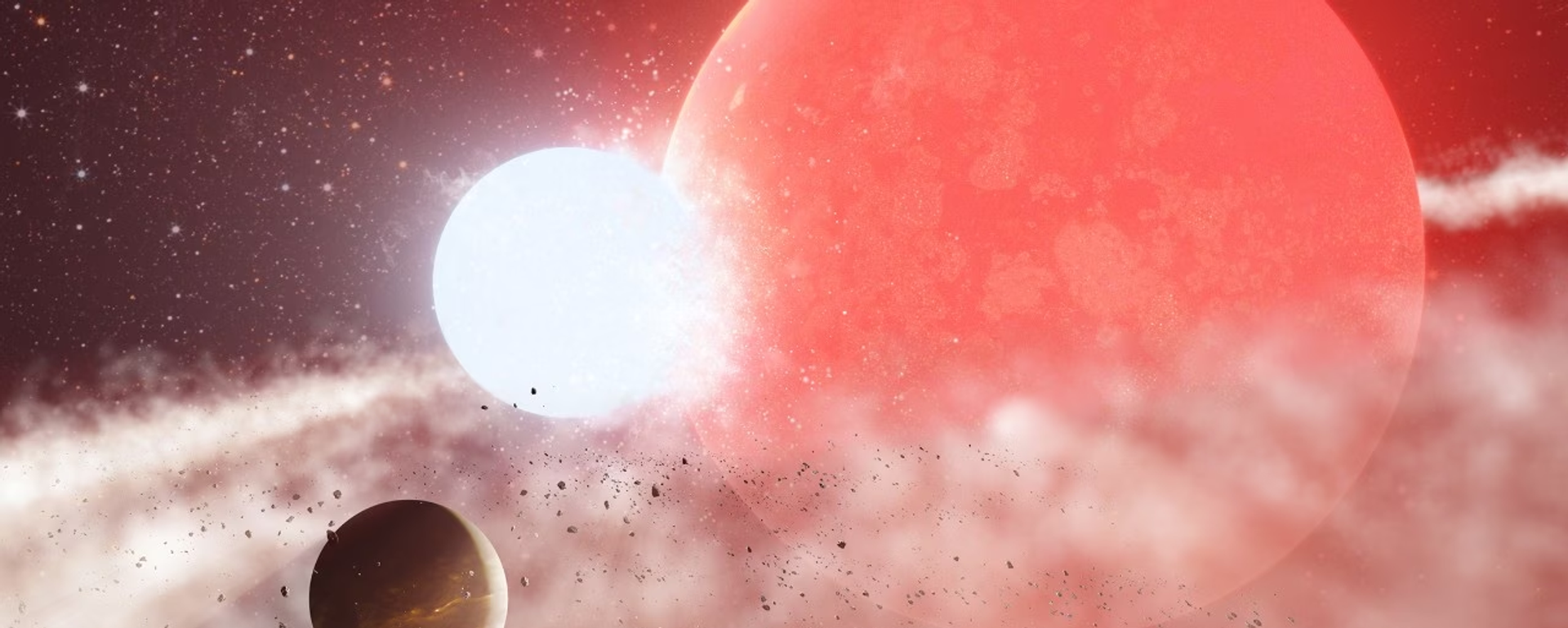https://sputnikglobe.com/20230705/astronomers-watch-as-supermassive-black-hole-begins-feasting-on-nearby-star-1111685267.html
Astronomers Watch as Supermassive Black Hole Begins Feasting on Nearby Star
Astronomers Watch as Supermassive Black Hole Begins Feasting on Nearby Star
Sputnik International
A supermassive black hole at the center of a galaxy 10 billion light-years away suddenly started shining immensely bright, puzzling astronomers who never expected such intense activity from such an object.
2023-07-05T21:21+0000
2023-07-05T21:21+0000
2023-07-05T21:19+0000
beyond politics
black hole
neutron star
european southern observatory's (eso)
astronomy
https://cdn1.img.sputnikglobe.com/img/07e7/07/05/1111685110_0:16:700:410_1920x0_80_0_0_85f83f8981b97afacdf31d444cb45064.jpg
A supermassive black hole at the center of a galaxy 10 billion light-years away was detected suddenly shining immensely bright, puzzling astronomers who never expected such intense activity from such an object.Their observations of the event have been documented and analyzed and are set to be published in the Monthly Notices of the Royal Astronomical Society, having already been released on the preprint server arXiv.According to the report, the team led by astronomer Samantha Oates of the University of Birmingham in the UK was looking for the telltale signs of a kilonova, or the merging of two neutron stars. The ultra-dense objects are related to black holes in that they are both potential outcomes of a star that goes supernova, but neutron stars lack the immense gravity of black holes that is able to trap even light from escaping.However, the bright flash created by J221951, as the event has been named by the scientists, was different: it lasted too long. After they looked deeper into the puzzle, they found that the light had come from a previously observed galaxy that was much further away than they initially believed: some 10 billion light-years away.They quickly surmised that the ultra-bright flash had come from the supermassive black hole at the center of the galaxy, which had suddenly begun feeding on large amounts of matter. They had a few theories about how exactly things went down, including that a star passed too close to the black hole and got torn apart by the intense gravity, or that a large amount of matter already orbiting the black hole in an accretion disk had suddenly reached its event horizon, or the point-of-no-return for falling into a black hole."For instance, if J221951 is associated with an active galactic nucleus turning on we may expect it to stop fading and to increase again in brightness, while if J221951 is a tidal disruption event we would expect it to continue to fade. We will need to continue to monitor J221951 over the next few months to years to capture its late-time behavior.""J221951 is one of the most extreme examples yet of a black hole taking us by surprise,” he added.
https://sputnikglobe.com/20230630/astronomers-find-puzzling-planet-that-shouldnt-exist-orbiting-red-giant-star-1111590554.html
Sputnik International
feedback@sputniknews.com
+74956456601
MIA „Rossiya Segodnya“
2023
News
en_EN
Sputnik International
feedback@sputniknews.com
+74956456601
MIA „Rossiya Segodnya“
Sputnik International
feedback@sputniknews.com
+74956456601
MIA „Rossiya Segodnya“
black hole; neutron star; astronomy; birmingham
black hole; neutron star; astronomy; birmingham
Astronomers Watch as Supermassive Black Hole Begins Feasting on Nearby Star
The study was done with the help of the European Southern Observatory's Very Large Telescope and New Technology Telescope, both located in northern Chile.
A supermassive black hole at the center of a galaxy 10 billion light-years away was detected suddenly shining immensely bright, puzzling astronomers who never expected such intense activity from such an object.
Their observations of the event have been documented and analyzed and are set to be published in the Monthly Notices of the Royal Astronomical Society, having
already been released on the preprint server arXiv.
According to the report, the team led by astronomer Samantha Oates of the University of Birmingham in the UK was looking for the telltale signs of a kilonova, or the merging of two neutron stars. The ultra-dense objects are related to black holes in that they are both potential outcomes of a star that goes supernova, but neutron stars lack the immense gravity of black holes that is able to trap even light from escaping.
When two neutron stars collide, they release huge amounts of electromagnetic radiation that shines white-hot for several days before taping off into a reddish glow. The same thing can happen when a neutron star collides with a black hole and is torn apart.
However, the bright flash created by J221951, as the event has been named by the scientists, was different: it lasted too long. After they looked deeper into the puzzle, they found that the light had come from a previously observed galaxy that was much further away than they initially believed: some 10 billion light-years away.
They quickly surmised that the ultra-bright flash had come from the supermassive black hole at the center of the galaxy, which had suddenly begun feeding on large amounts of matter. They had a few theories about how exactly things went down, including that a star passed too close to the black hole and got torn apart by the intense gravity, or that a large amount of matter already orbiting the black hole in an accretion disk had suddenly reached its event horizon, or the point-of-no-return for
falling into a black hole.
"In the future we will be able to obtain important clues that help distinguish between the tidal disruption event and active galactic nuclei scenarios," Oates said in a statement.
"For instance, if J221951 is associated with an active galactic nucleus turning on we may expect it to stop fading and to increase again in brightness, while if J221951 is a tidal disruption event we would expect it to continue to fade. We will need to continue to monitor J221951 over the next few months to years to capture its late-time behavior."
"Our understanding of the different things that supermassive black holes can do has greatly expanded in recent years, with discoveries of stars being torn apart and accreting black holes with hugely variable luminosities," said astrophysicist Matt Nicholl of Queens University Belfast, one of the study’s co-authors.
"J221951 is one of the most extreme examples yet of a black hole taking us by surprise,” he added.



